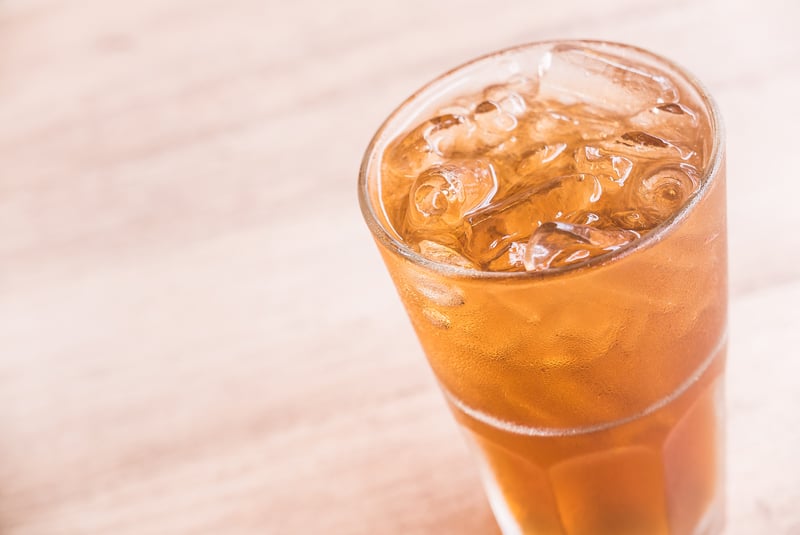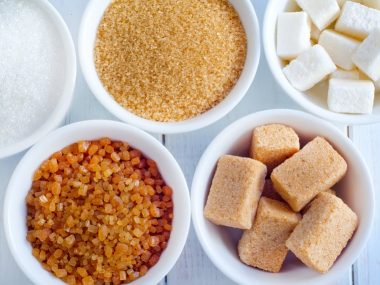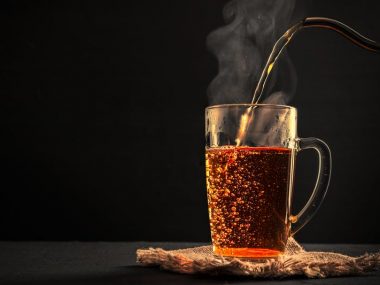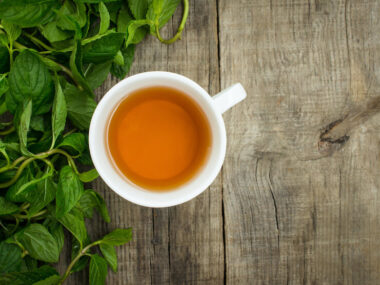Listen up, iced tea drinkers! Iced tea isn’t supposed to be cloudy. There’s a very easy solution to having clear iced tea.
Table of Contents
Tea Brewing And Cloudy Tea
Try and picture two glasses of iced tea. In one glass, the tea is very dark and muddy looking (almost like coffee.) The other glass contains tea that has a certain translucence that’s almost clear enough to see through. Now which glass of iced tea is more appealing and the one iced tea drinkers will likely choose?
Iced tea drinkers have fought with cloudy tea for ages, and the solution to avoiding this problem is an easy fix. The issue is most people don’t know about this “easy fix.” To better understand what causes cloudy tea, let’s break down the brewing process, which is where we will reveal where the problem lies.
Brewing Methods
There are two common methods to brewing tea. Hot brewing is the most common method used to make tea. Cold brewing is less common; however, it’s beginning to trend among the tea drinking community.
Hot Brewing
The hot brew method is considered traditional and the most commonly used brewing method for making tea. Tea leaves (either loose-leaf or tea bag form) are introduced to hot water. Once in hot water, the steeping occurs. Hot brew produces a more robust, astringent tea.
Hot Brewing Plus Ice
This method includes using hot brewing and then adding ice to chill the tea down immediately.
Cold Brewing
Cold brewing is less commonly used. Instead of introducing tea leaves to hot water, those tea leaves (loose leaf or tea bags) marry with cold water where steeping takes place in the refrigerator overnight. Cold-brew produces a smoother, less astringent tea.
Tea leaves contain natural constituents that include caffeine and tannins. Tannins produce the familiar astringent taste that tea has. Too long of a brew, and the caffeine and tannins skyrocket, making tea rather undesirably bitter.
Let’s take a look at a freshly made pitcher of freshly brewed iced tea to better understand how cloudy tea happens.
A Scenario Of What Makes Tea Cloudy
Iced tea drinkers have a specific way to make iced tea. It begins by filling a large pan with tap water. Grocery store commercial tea bags are dropped into the water and are literally boiled to death. These tea bags are brewed for longer than recommended times because of the misconception that the longer the brew, the better it will taste. However, this is simply not true.
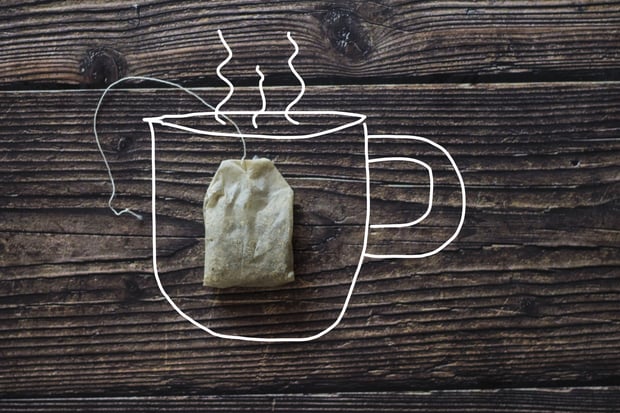
Next, the hot tea is removed from the heat. The tea steeping takes place by allowing the pan with the tea bags to sit for an unknown amount of time. The teabags are discarded, and the tea gets poured into a large tea pitcher filling it about ¾ full. Cold tap water (or ice) is added to chill the hot tea and to complete filling the tea pitcher. A lid is placed on the pitcher, and in the refrigerator, it goes.
Does this process sound familiar? Within the short time of brewing tea in this manner, there’s a host of things that can lead to cloudy tea.
The Answers To “Why Is My Brewed Tea Cloudy?”
To get down to the answer to this problem, it begins with the tea plant itself. A tea plant (Camellia sinensis) is cultivated in different terroirs (climates, elevations, environments.) The same tea plant grown in India will taste and look different in a cup of brewed tea compared to the same plant grown in Sri Lanka. How a tea is processed also plays a vital role in tea’s taste and appearance.
Tannins In Tea
Tannin is a naturally-occurring constituent in the tea plant. It’s responsible for the bitter, astringent taste tea is known for. The amount of tannins differs in tea plants grown in different terroirs. Tannin in white tea, for example, is lower than that of a black tea.
Tannin is a key player in cloudy tea. Hot brewing extracts more tannins from the tea leaves (loose leaf or tea bag tea), whereas cold brewing extracts less. Longer brewing times also extract additional tannins from the tea leaves. This is why following the recommended water temperature and steeping time is important. By doing so, the true essence of tea’s taste and health benefits bloom.
Tannin is water-soluble, and during the brewing process, it turns into a clear solution. Contrary to what many iced tea drinkers think, brewing/steeping tea longer than the recommended time at higher temperatures does nothing more than produce a very bitter glass of tea.
Shocking Tea Tannins Into A Frenzied State
Tea tannins do not like temperature changes that occur suddenly—pouring cold water or adding ice to fresh, hot brewed tea shocks the tannins. What occurs as a result is one of the leading causes of cloudy tea.
Freshly brewed hot tea tannins are happily existing as a clear solution that we cannot see. Once cold water or ice hits them, they are expelled from their clear state, becoming suspended dark particles within the tea. This chemical reaction yields a pitcher or glass of cloudy tea. The tannin particles make the tea look murky.
Many readers ask, “Is cloudy tea safe to drink?” This is a great question; yes, it’s safe to drink. Any aesthetic appeal that the tea had before adding cold water or ice is replaced with cloudiness. For many tea aficionados, this is undesirable in a glass of iced tea.
Do we pour the tea down the drain and start over? The answer might be surprising!
How Do You Fix Cloudy Tea: Easy Solutions To The Problem
Tannin particles are very sensitive to acidic, alkaline things such as lemon (light bulb moment!) This is why iced tea is served with lemon wedges. It’s not to make the glasses pretty. That slice of lemon is the key to clearing up a cloudy glass of iced tea.
Simply squeezing or dropping the lemon into the tea causes most of the suspended tannin particles to dissolve. This is such an easy fix that not many know about.
The other solution to avoiding a pitcher or glass of cloudy iced tea is by using bottled/filtered water. Water can make or break iced tea. If the water is full of chemicals, minerals, or pollutants, the chances are that a glass of iced tea will taste bad and be muddled and cloudy. This also applies to ice cubes made from that same water.
Why Does My Tea Have Foam?
Hard water contains higher levels of calcium and magnesium. These two minerals cause tannins to convert into particles that float on the surface of the tea rather than in a suspension within the tea. These floating particles are what we see as foam. This chemical reaction is clearly explained by a research article entitled “The Influence of Water Composition on Flavor and Nutrient Extraction in Green and Black Tea.”
The information provided by this article is intriguing as it goes on to tell how calcium and magnesium present in tap water can cause brewed tea (shocked with cold water or ice) to develop a creamy layer of scum on top of the tea. This scummy layer forms as the tea begins to cool.
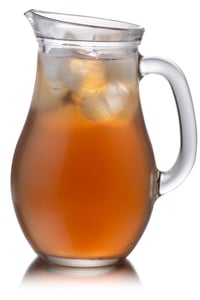
Caffeine and flavonols in the tea react with calcium or magnesium in tap water. This reaction causes oxidation. Not only will there be a layer of foam on the tea, but the iced tea itself will be cloudy and much darker. The overall taste of the tea is much more inferior to that of an iced tea brewed the correct way.
How To Brew Iced Tea The Right Way
Here are the steps to brewing tea intended for iced tea. Regardless of following all the steps, there’s inevitably going to be a pitcher of cloudy iced tea that pushes its way through even under ideal conditions. If that happens, plop a slice of lemon in!
Tips To Getting The Perfect Glass Of Iced Tea
- Use loose-leaf tea rather than off-the-shelf commercial tea bag tea. Loose-leaf tea is higher quality tea.
- Use filtered or bottled water for brewing the tea and for iced cubes.
- Have a lemon on hand if the tea happens to cloud up.
- Never pour cold water or add ice cubes to hot brewed tea. Instead, allow the freshly brewed tea to cool off to room temperature. Then add water that is also at room temperature to the brewed tea.
- Refrigerate the brewed tea before adding ice cubes.
Steps To Brewing Iced Tea
- Heat the water to the recommended temperature according to the tea (black, green, oolong, yellow or white.)
- Place the loose-leaf tea into a tea infuser.
- Remove the hot water from the heat.
- Add the tea infuser to the hot water.
- Cover and allow it to steep for the recommended time (according to the tea type.)
- Remove the cover and the tea infuser.
- Allow the brewed tea to reach room temperature.
- Pour the cooled brewed tea into a tea pitcher.
- Add bottled/filtered water (that is at room temperature, not cold) to top off the tea pitcher if needed.
- Place the tea into the refrigerator to chill.
- Pour the tea into glasses filled with ice and enjoy.
Iced Tea Can Be Clear
Iced tea drinkers don’t have to compromise on the quality of a glass of iced tea when the solution to cloudy tea is as easy as a slice of lemon or a bottle of water. Most prefer clear tea to crackle over the ice cubes instead of a muddy liquid.
